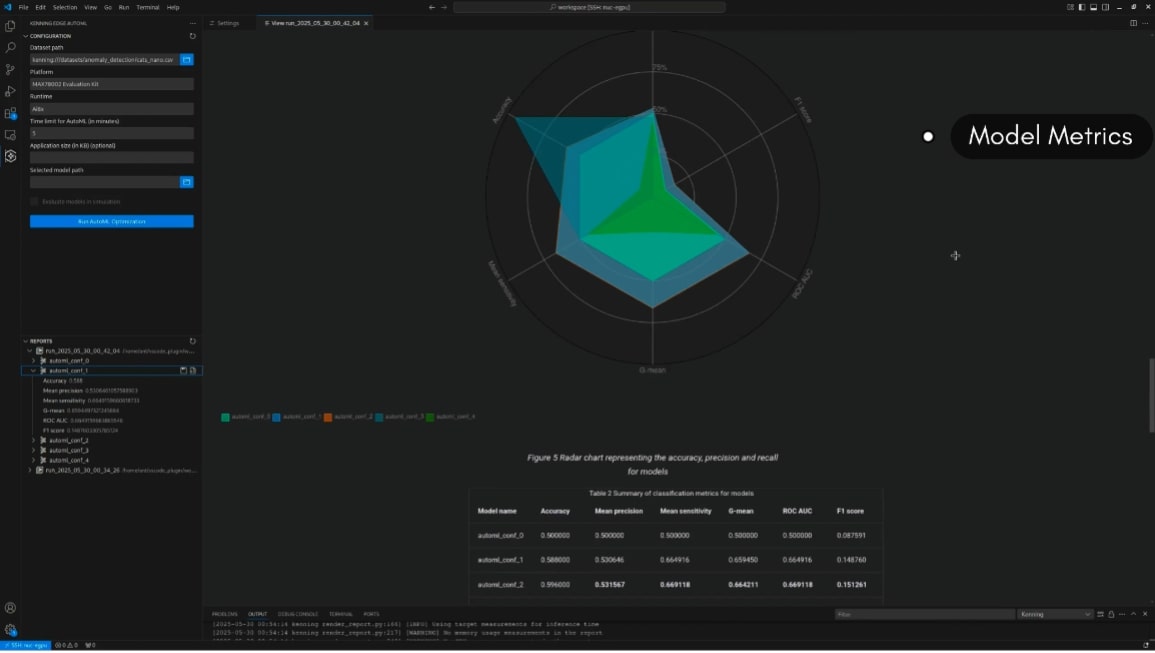

Edge AI continues to gather momentum, but deploying machine learning models on constrained hardware like microcontrollers remains a technical hurdle for many developers. Training, tuning, optimising and deploying these models, especially under tight memory and power limits, is still a complex task.
Now, Analog Devices (ADI) and Antmicro have teamed up to release AutoML for Embedded, a new open-source solution designed to remove much of that complexity. It’s built into the Kenning framework and available as a Visual Studio Code plugin, offering developers a streamlined way to generate, test and deploy ML models directly onto edge hardware.
AutoML for Embedded targets both data scientists and embedded developers, offering automated workflows that cover data prep, model selection, hyperparameter tuning, and performance validation. Behind the scenes, it uses SMAC and Hyperband algorithms to search and evaluate model candidates, keeping only the best-performing ones that also fit within available memory and processing limits.
The end result: lightweight models that are deployment-ready for low-power devices like microcontrollers, without needing deep ML expertise.
The plugin integrates smoothly with ADI’s MAX78002 and MAX32690 MCUs, and it supports development using the Zephyr RTOS and Renode simulation, giving teams full control of testing and validation before hardware deployment.
Key features include:
Visual Studio Code plugin interface
Full support for ADI edge AI MCUs
Kenning-based model benchmarking and optimisation
Simulation support using Renode
Open-source licensing with no vendor lock-in
The toolchain provides pre-built tutorials, datasets, and reproducible pipelines, making it easier to move from raw data to functional edge AI deployment without needing a complex DevOps setup or specialised ML frameworks.
One recent demo used AutoML for Embedded to build an anomaly detection model using time-series data, which was deployed on both physical hardware and its Renode-based digital twin for validation.
Other applications include:
Vision-based tasks on low-power cameras
Predictive maintenance in industrial systems
On-device NLP for text classification
Action detection in robotics or wearable devices
This joint release reflects a growing move toward transparency and flexibility in AI deployment tools. “We developed an automated flow and VS Code plugin that vastly reduces the complexity of building optimised edge AI models,” said Michael Gielda, VP of Business Development at Antmicro. “With flexible simulation and Zephyr RTOS support, the road to transparent and efficient edge AI development is open.”
AutoML for Embedded is available now on the Visual Studio Marketplace and GitHub, with full documentation and support from both ADI and Antmicro. Developers are encouraged to test the platform, provide feedback, and collaborate on new features.
Learn more and read the full announcement on www.analog.com

